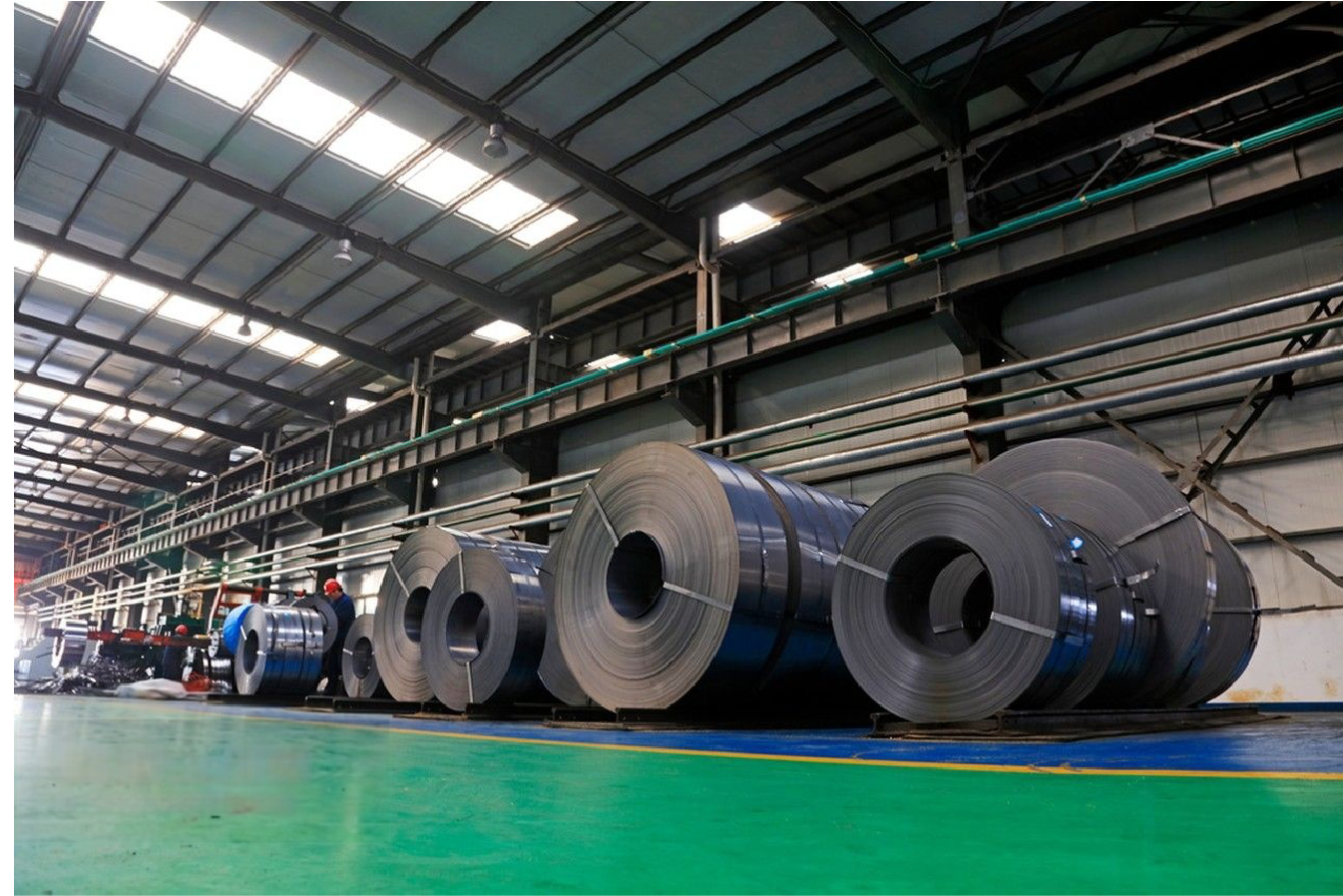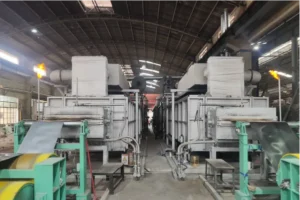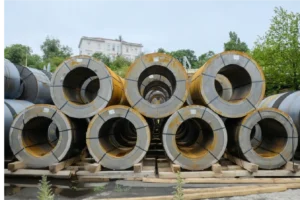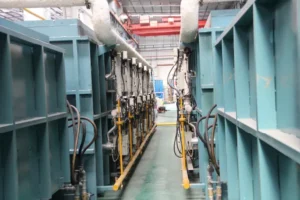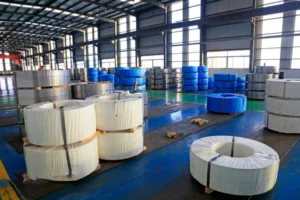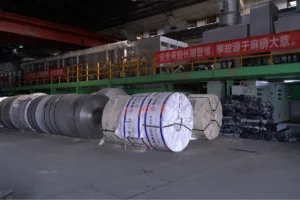Stainless Steel Coil Price Trends & Forecast 2025
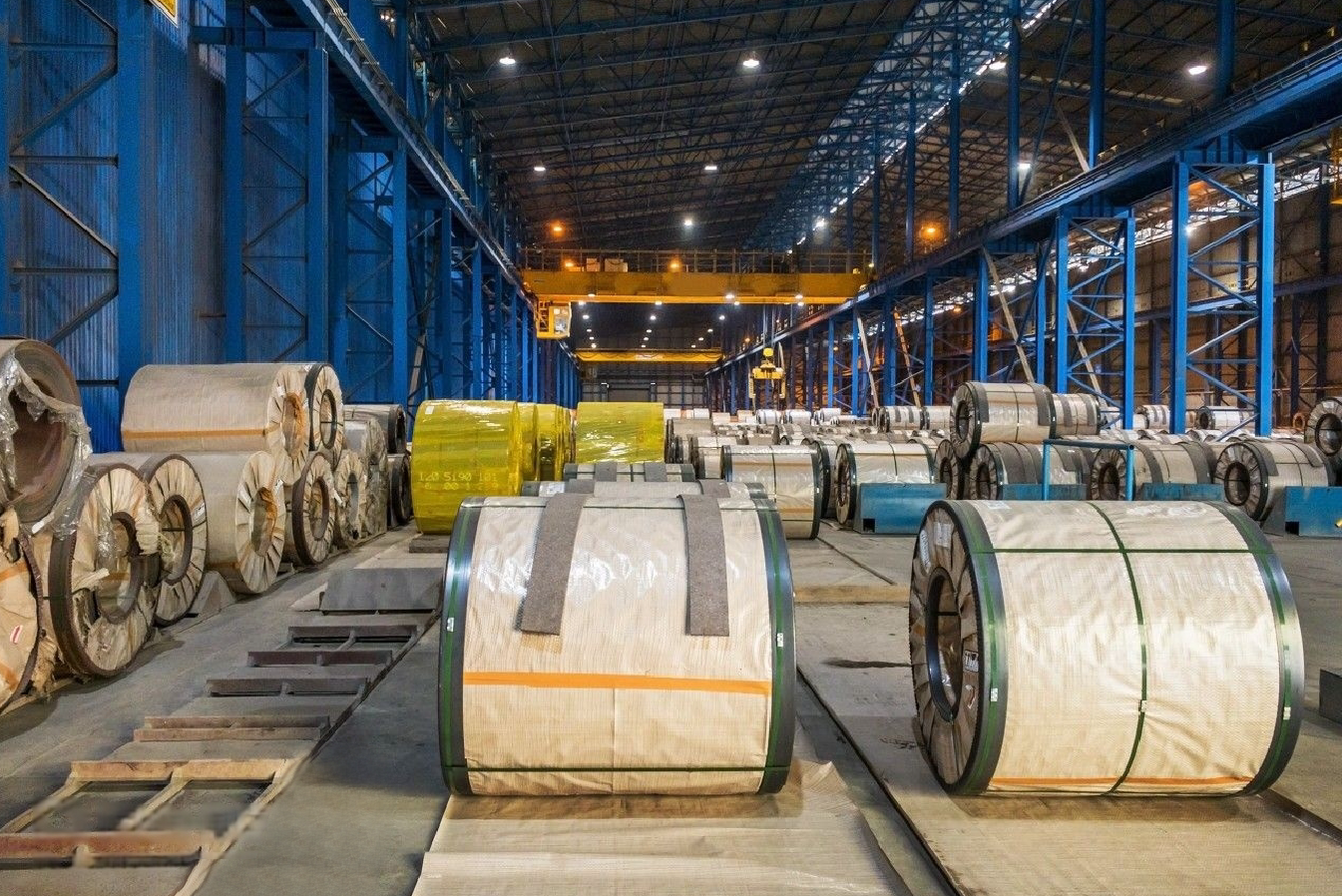
Struggling with the unpredictable nature of stainless steel coil prices? This volatility can wreak havoc on your budgeting and project planning, directly impacting your profitability. As Global Business Director at MFY, I understand these challenges intimately. This article aims to provide clarity on price trends and forecasts.
Stainless steel coil prices are primarily driven by raw material costs like nickel and chromium, global supply-demand dynamics, and overarching economic policies. Forecasts leading up to 2025 indicate ongoing fluctuations, yet with a potential for stabilization contingent on geopolitical events and evolving market conditions, emphasizing the importance of strategic procurement.
Navigating these fluctuating prices is crucial for anyone in industries reliant on stainless steel. Whether you're in manufacturing, construction, or trading, understanding the undercurrents shaping these costs can be the difference between profit and loss. We at MFY believe in empowering our clients with this knowledge, helping you make proactive, informed decisions rather than reactive, costly ones.
The stainless steel market is a complex ecosystem, influenced by a myriad of interconnected factors. It's not just about the spot price of nickel; it's about global economic health, trade policies, energy costs, and even unforeseen events like pandemics or geopolitical tensions. For instance, a surge in demand from the automotive or construction sector1 in one region can ripple across the globe. As MFY, with our integrated supply chain spanning from raw materials to finished products like coils, sheets, and pipes, we've seen firsthand how these elements play out. Our extensive network across India, Southeast Asia, and the Middle East gives us a unique vantage point to observe and anticipate these shifts.
What are the historical price trends of stainless steel coils over recent years?
Finding it difficult to make sense of past stainless steel coil price swings and how they impact your current purchasing strategy? These historical fluctuations often leave businesses feeling unprepared. Understanding these patterns is the first step towards building a more resilient procurement plan.
Historically, stainless steel coil prices have shown significant volatility, influenced by cycles of high demand, raw material shortages (especially nickel), and periods of economic downturn. Key spikes often correlated with global industrial booms, while dips occurred during recessions or when new production capacities came online.
The journey of stainless steel coil prices over the past few years has been anything but a straight line. I recall periods, particularly between 2020 and 2022, where we saw unprecedented volatility. It began with the initial shock of the pandemic, which disrupted supply chains globally. Then, as economies started to recover, pent-up demand, particularly from construction and manufacturing sectors – key clients for MFY’s coils and sheets – led to a surge in prices. Raw materials, the usual suspects, played a significant role. Nickel, a primary component, saw its own dramatic price escalations due to supply concerns and speculative trading. For MFY, this meant constant communication with our clients, helping them understand these dynamics. We had to leverage our strong production capacity and inventory management to buffer some of these shocks for our partners in India and Southeast Asia. We also observed that different grades of stainless steel reacted differently; for example, austenitic grades like 304, rich in nickel, were more susceptible to these swings than ferritic grades. This period underscored the importance of not just tracking prices, but understanding the multi-layered reasons behind their movements. It's a lesson we’ve embedded into our advisory services for our clients, from large manufacturing companies to dynamic trading houses.
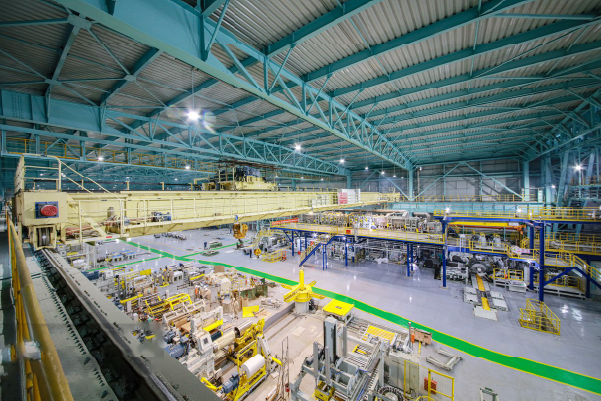
Delving deeper into historical price trends requires us to dissect the contributing factors more granularly. It's not a monolithic movement; rather, it’s a confluence of drivers that often create a complex, sometimes contradictory, pricing landscape. As we at MFY guide our clients, understanding these historical nuances is paramount for future-proofing their operations.
The Era of Raw Material Dominance (Pre-2020)
Prior to the more recent global upheavals, the narrative of stainless steel coil prices was heavily dominated by the cost of its primary raw materials: nickel, chromium, and molybdenum. For instance, if we look at the period between 2015 and 2019, nickel prices on the London Metal Exchange (LME) were a direct and almost immediate bellwether for stainless steel surcharge adjustments. I remember working with a manufacturing client in India who produced automotive components. Their entire costing model for stainless steel parts hinged on the monthly nickel average. During this time, MFY focused heavily on helping clients develop flexible sourcing strategies. This involved not just locking in prices where possible, but also exploring different grades of stainless steel that might offer similar performance characteristics but were less exposed to the volatility of a single raw material.
Another key aspect of this era was the relatively stable, albeit growing, global demand. China's industrial expansion was a consistent factor, absorbing a significant portion of global production. However, outside of specific commodity booms, the supply side, particularly from major producing nations like Indonesia (for nickel ore) and China (for finished stainless steel), was generally able to keep pace. This created a market where, while fluctuations existed, they were somewhat more predictable, often following established commodity cycles. For our trading clients in the Middle East, this meant focusing on inventory turnover and capitalizing on arbitrage opportunities based on these relatively clearerraw material cost trends.
The challenge during this period for businesses was less about sudden, sharp shocks and more about managing the margin squeeze when raw material prices trended upwards for sustained periods. Energy costs, while always a factor in production, hadn't yet reached the crisis levels seen later. Therefore, our advice at MFY often revolved around long-term contracts where feasible, hedging strategies for raw materials if the client's scale permitted, and optimizing their own production efficiencies to absorb some of the input cost variations. It was a time of strategic, rather than reactive, management of price risks.
The Pandemic & Supply Chain Shockwaves (2020-2022)
The onset of the COVID-19 pandemic in 2020 completely rewrote the rulebook for stainless steel coil prices. Initially, there was a sharp dip as global lockdowns halted industrial activity. I recall speaking to numerous clients, from equipment integrators to construction contractors, who saw projects stall overnight. However, this was short-lived. The subsequent phase was characterized by unprecedented supply chain disruptions. Shipping costs skyrocketed, container availability plummeted, and labor shortages at ports and production facilities created massive backlogs. For MFY, a company with a mission to drive the global expansion of China’s stainless steel supply chain, this was a period of intense operational challenges but also innovation. We had to work tirelessly to ensure our rapid export delivery commitments were met, often finding creative logistical solutions.
Simultaneously, demand didn't just recover; it surged in many sectors. Government stimulus packages in various countries fueled construction and infrastructure projects. A shift in consumer spending towards durable goods (since services and travel were restricted) boosted demand for appliances and electronics, all of which use stainless steel. This demand-supply imbalance sent prices soaring. Nickel prices, as always, were a major factor, but this time, the "everything else" cost – logistics, energy, labor – added significant premiums. A typical manufacturing client in Southeast Asia, who relied on our stainless steel coils for producing consumer goods, saw their input costs nearly double in less than 18 months. Our role shifted to helping them secure supply, even if at higher prices, because a production stoppage was even more costly.
This period also highlighted the fragility of just-in-time inventory systems. Companies that had previously prided themselves on lean inventories found themselves unable to secure materials. As a response, MFY enhanced its focus on strong production capacity and inventory management, recognizing the need to provide a buffer for our clients. We saw a distinct trend of businesses looking to diversify their sourcing and build more resilient supply chains, a core strength we offer. The lessons from 2020-2022 were harsh but invaluable, emphasizing the interconnectedness of the global economy and the profound impact of unforeseen events on industrial commodity prices.
Post-Pandemic Adjustments & Regional Divergences (2023-Present)
As the world moved into a post-pandemic phase from 2023 onwards, the stainless steel coil market entered a period of adjustment and increasing regional divergence. While some of the extreme logistical pressures began to ease, new complexities emerged. Inflationary pressures globally, driven by high energy costs (exacerbated by geopolitical events like the war in Ukraine) and persistent labor market tightness, kept a floor under production costs. For MFY, this meant a continued focus on operational efficiency within our integrated supply chain, from raw material trading to cold-rolled processing and tube manufacturing.
We started observing more pronounced differences in price trends across various regions. For example, demand in China, a bellwether for the global steel market, showed signs of slowing due to its own economic adjustments, particularly in the property sector. This had a dampening effect on Asian benchmark prices. Conversely, in markets like India and parts of Southeast Asia, industrial activity and infrastructure development continued robustly, supporting demand for our stainless steel coils, sheets, and pipes. This regional divergence required us at MFY to be even more agile in our market analysis and export strategies, tailoring our approach to the specific conditions of each export market.
Another significant trend has been the increasing focus on sustainability and green steel. While not yet a dominant price driver for standard stainless steel coils, the anticipation of stricter environmental regulations and carbon pricing mechanisms is beginning to influence investment decisions in new production capacity. This could, in the medium to long term, lead to a premium for lower-carbon stainless steel. We are already seeing some of our more forward-thinking clients, particularly equipment integrators supplying to European markets, inquiring about the carbon footprint of our products. This evolving landscape requires continuous adaptation and an innovation-driven approach, core values at MFY. The current period is characterized by a "new normal" of higher baseline costs and greater uncertainty, making robust market intelligence and strong supplier relationships more critical than ever.
Nickel prices directly impact stainless steel costsTrue
The text explicitly states that nickel is a primary component of stainless steel and its price fluctuations significantly affect stainless steel coil prices.
Pandemic caused only price decreasesFalse
While the pandemic initially caused price dips, it was followed by significant price surges due to supply chain disruptions and demand recovery.
How have external factors influenced these price trends?
Are you feeling overwhelmed by the myriad external forces constantly reshaping stainless steel coil prices? From geopolitical shifts to economic policies, these factors create a volatile market. Understanding their specific impact is key to navigating this complex landscape effectively.
External factors like geopolitical tensions, trade policies (tariffs, sanctions), energy costs, and global economic health (recession fears vs. growth) have profoundly influenced stainless steel prices. For instance, disruptions in nickel-producing regions or new trade tariffs can cause immediate and significant price shocks.
The influence of external factors on stainless steel coil prices cannot be overstated; they are the invisible hands that often dictate market direction with considerable force. At MFY, we continuously monitor these elements because they directly impact our operations and, more importantly, our clients' businesses. Take, for instance, geopolitical events. The conflict in Ukraine, while seemingly distant for some, had immediate repercussions on energy prices globally. Higher energy costs translate directly into higher production costs for stainless steel2, as steelmaking is an energy-intensive process. This isn't just a theoretical impact; we saw it reflected in our own production costs and had to work with our clients to manage these pass-through increases. Similarly, trade policies are a huge driver. The imposition of tariffs or anti-dumping duties by one country or bloc can redirect trade flows, create artificial shortages or surpluses in specific regions, and ultimately skew prices. I remember when certain import tariffs were introduced in one of our key export markets; it necessitated a rapid recalibration of our pricing and supply strategies for our stainless steel sheet and pipe clients there. Economic health is another critical pillar. A global recessionary fear can dampen industrial demand, leading to price softening, while a booming global economy, as seen in certain post-pandemic phases, can strain supply and push prices up. These are not isolated incidents but interconnected variables that MFY helps its clients, from manufacturers to traders, understand and anticipate.

The interplay of external factors creates a dynamic and often challenging environment for predicting stainless steel coil prices. At MFY, our approach involves not just observing these factors but analyzing their potential cascading effects across our fully integrated supply chain, ensuring we can provide agile and resilient solutions to our diverse clientele.
Geopolitical Instability and Resource Nationalism
Geopolitical events, ranging from regional conflicts to shifts in international relations, cast a long shadow over commodity markets, and stainless steel is no exception. A key concern here is resource nationalism3, where countries rich in essential raw materials like nickel or chromium might implement policies that restrict exports or favor domestic processing. For example, Indonesia's ban on nickel ore exports, aimed at developing its domestic smelting industry, significantly altered the global nickel supply chain. This directly impacted the input costs for stainless steel producers worldwide. As MFY, which integrates raw material trading into its operations, we had to navigate these shifts by diversifying our sourcing and strengthening relationships with suppliers in various regions. When a major nickel-producing region experiences instability, it can send speculative waves through the LME, causing nickel prices to spike, which then translates to higher stainless steel coil prices.
I recall a specific instance where political tensions between two major trading blocs led to retaliatory tariffs that included certain steel products. A construction contractor client of ours in Southeast Asia, who was in the middle of a large infrastructure project requiring substantial stainless steel pipes (manufactured from our coils), faced a sudden increase in their projected material costs. Our team at MFY had to work closely with them, exploring options like adjusting delivery schedules, and leveraging our strong production capacity to see if alternative specifications could mitigate some of the tariff impact without compromising project integrity. This highlights how geopolitical factors, often originating far from the end-user, can have very direct and tangible consequences on project viability and profitability.
Furthermore, conflicts in regions that are key energy suppliers or situated along critical shipping routes can also indirectly affect stainless steel prices. Increased fuel costs for transportation, higher insurance premiums for cargo, and rerouting of shipments all add to the landed cost of materials. The Red Sea disruptions in late 2023 and early 2024 are a prime example, impacting shipping times and costs for goods moving between Asia and Europe. For a global business like MFY, with export markets spanning India, Southeast Asia, the Middle East, and Russia, maintaining resilient logistics and rapid export delivery capabilities in the face of such geopolitical headwinds is a constant focus.
Global Economic Health and Monetary Policies
The overall health of the global economy is perhaps the most fundamental external driver of stainless steel demand, and consequently, its price. During periods of robust economic growth, industrial production expands, construction activity increases, and consumer spending on durable goods (many of which contain stainless steel) rises. This heightened demand, if not matched by a corresponding increase in supply, naturally pushes prices upwards. Conversely, fears of a recession or an actual economic slowdown can lead to a contraction in demand, causing prices to soften. We at MFY closely monitor leading economic indicators such as GDP growth rates, Purchasing Managers' Indexes (PMIs), and industrial production figures across our key markets and globally. For instance, a slowdown in China's manufacturing PMI can often signal a potential cooling in regional steel demand.
Monetary policies enacted by central banks also play a crucial role. Interest rate hikes, aimed at curbing inflation, can increase the cost of borrowing for businesses, potentially slowing down investment in new projects and expansion. This can dampen demand for capital goods and construction materials, including stainless steel. For our clients, particularly manufacturing companies and engineering contractors who often rely on financing for their projects and operations, changes in interest rates can significantly affect their investment decisions and purchasing power. A client in India, a rapidly growing manufacturing hub, might delay a factory expansion if borrowing costs become too prohibitive, thereby reducing their immediate need for stainless steel coils.
Currency fluctuations, often influenced by differing monetary policies and economic strengths, also impact stainless steel prices in international trade. Since commodities like nickel are typically priced in US dollars, a strengthening dollar can make stainless steel more expensive for buyers in countries with weaker local currencies, even if the underlying dollar price of the commodity remains unchanged. As MFY engages in export trade to diverse markets, we are acutely aware of these currency dynamics. We often work with clients to explore hedging mechanisms or discuss pricing in local currencies where feasible, although the latter carries its own set of risks. The interplay between global economic growth, inflation, interest rates, and currency values creates a complex matrix that directly influences the affordability and demand for stainless steel products.
Trade Policies, Tariffs, and Regulatory Changes
Trade policies, including import/export tariffs, anti-dumping duties, and countervailing duties, are powerful external factors that can create significant regional price disparities and reshape global trade flows for stainless steel. When a country imposes a tariff on imported stainless steel coils, it makes those imports more expensive for domestic buyers, theoretically protecting local producers. However, it can also lead to higher input costs for downstream industries that rely on those coils. At MFY, which exports to various markets including India, Southeast Asia, and the Middle East, we have to meticulously track these trade regulations. A sudden imposition of anti-dumping duties in one of our target markets can necessitate a swift re-evaluation of our export strategy for that region.
For example, a few years ago, one of our key export destinations initiated an anti-dumping investigation into stainless steel coils from several countries, including China. This created a period of uncertainty for our distributor and trader clients in that market. They were unsure about future landed costs and potential retroactive duties. During such times, MFY's role extends beyond just supplying material; we provide market intelligence and work on strategies to mitigate risks, perhaps by focusing on grades or specifications not covered by the investigation, or by helping clients understand the timeline and potential outcomes. This is where our mission to drive the global expansion of China's stainless steel supply chain involves navigating complex regulatory landscapes.
Regulatory changes related to environmental standards and sustainability are also emerging as influential external factors. The push for "green steel" and carbon border adjustment mechanisms (CBAM), like the one being implemented by the European Union, will increasingly affect the cost and marketability of steel products based on their carbon footprint. While these are longer-term trends, they are already prompting stainless steel producers, including those in China, to invest in cleaner production technologies. For MFY, our commitment to innovation-driven development includes staying ahead of these environmental regulations and working with our production facilities to minimize our environmental impact. This will become a crucial competitive differentiator and will undoubtedly influence future pricing structures, potentially creating a premium for verifiably "green" stainless steel.
Below is a simplified table illustrating how different external factors might impact prices:
| External Factor | Potential Price Impact | Example Scenario | MFY's Adaptive Strategy |
|---|---|---|---|
| Geopolitical Conflict | Increase | Disruption in key nickel mining region. | Diversify raw material sourcing, secure inventory. |
| Global Recession | Decrease | Reduced industrial demand worldwide. | Focus on value-added services, explore niche markets. |
| New Import Tariffs | Increase (local) | Target market imposes tariffs on SS coils. | Analyze tariff scope, explore alternative grades/markets. |
| Interest Rate Hike | Decrease (demand) | Higher borrowing costs slow construction projects. | Offer flexible payment terms (where feasible). |
| Favorable Trade Deal | Decrease (local) | Reduced import duties between trading partners. | Optimize logistics for increased volume. |
| Energy Price Surge | Increase | Higher natural gas/electricity costs for production. | Invest in energy-efficient processes. |
This table is a simplification, as factors often interact, but it provides a snapshot of the cause-and-effect relationships we constantly analyze.
Geopolitical events affect stainless steel pricesTrue
Conflicts and trade policies in raw material-producing regions directly impact production costs and supply chains, leading to price volatility.
Stainless steel prices are immune to currency fluctuationsFalse
Since nickel (a key component) is dollar-denominated, exchange rate changes significantly affect material costs for non-dollar buyers.
What is the current market situation for stainless steel coils?
Wondering about the present state of the stainless steel coil market4 and how it affects your immediate procurement needs? With so many variables at play, getting a clear picture is challenging. Understanding today's market is crucial for making timely and cost-effective decisions.
Currently, the stainless steel coil market is characterized by cautious optimism, with regional demand variations, ongoing adjustments to energy costs, and a watchful eye on global economic indicators. Supply chains have largely stabilized post-pandemic, but logistical efficiencies remain a focus.
As of late 2023 and heading into early 2024, the stainless steel coil market presents a mixed but cautiously stabilizing picture. From my perspective at MFY, after the rollercoaster of the past few years, we're seeing a market that's more discerning and focused on fundamentals. While the extreme supply chain bottlenecks have eased, logistics costs and efficiency remain a key consideration for global players like us. Raw material prices, particularly for nickel, have seen some correction from their historic highs but remain sensitive to supply news and LME speculative activity5. Demand is quite varied regionally. For instance, in some of our key export markets like India, we continue to see healthy demand from the manufacturing and infrastructure sectors. However, in other regions, there might be a more subdued outlook due to slower economic growth or specific sectoral challenges, like a cooling property market in some parts of Asia. Energy prices, though off their peaks, are still at elevated levels compared to pre-pandemic times, contributing to a higher baseline production cost for stainless steel globally. At MFY, our integrated supply chain and strong production capacity allow us to manage these variables more effectively, offering a degree of stability and reliability to our clients, whether they are large manufacturing companies or dynamic traders. We are also noticing an increased emphasis from clients on supply chain resilience and supplier reliability, moving beyond just price-driven decisions.
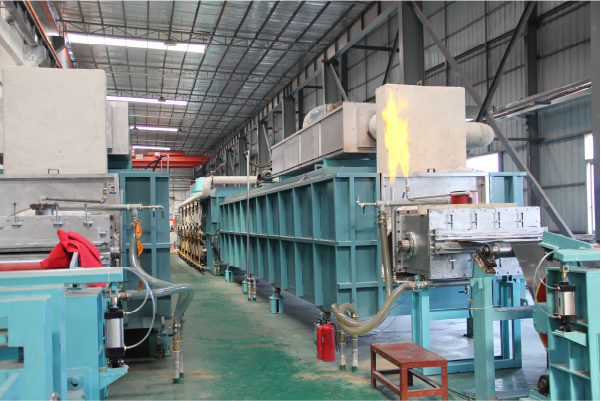
The current market is a complex tapestry woven from threads of recovering demand, persistent cost pressures, and evolving geopolitical and economic landscapes. At MFY, we leverage our deep industry integration—from raw material trading and cold-rolled processing to tube manufacturing and digital innovation—to provide our clients with a clear and actionable understanding of this environment.
Demand Dynamics: Regional Strengths and Sectoral Shifts
In the current market, stainless steel coil demand is not uniform globally; it exhibits significant regional variations and sectoral specificities. At MFY, serving diverse markets like India, Southeast Asia, the Middle East, and Russia, we observe these nuances firsthand. For example, India continues to be a bright spot, with robust government spending on infrastructure (roads, railways, urban development) and a burgeoning manufacturing sector ("Make in India" initiative) driving consistent demand for stainless steel coils and sheets. We see strong offtake from our clients in India who are involved in manufacturing automotive components, kitchenware, and process equipment. Similarly, certain Southeast Asian nations are also showing resilient demand, particularly in construction and electronics manufacturing.
However, the picture is more mixed elsewhere. Some traditionally strong markets may be experiencing a slowdown due to economic headwinds or specific sectoral downturns. For instance, a cooling in the global consumer electronics market after a pandemic-driven surge can temper demand for certain high-finish stainless steel grades. The automotive sector, a major consumer of stainless steel, is also in a state of flux with the transition to electric vehicles (EVs). While EVs also use stainless steel, the types and quantities might differ, and the overall pace of automotive production can be affected by factors like semiconductor availability or changing consumer preferences. As MFY, our strategy involves maintaining a diversified client portfolio, catering to various sectors from manufacturing companies and engineering contractors to distributors and traders, which helps us balance these sectoral shifts.
Moreover, we are noticing a subtle but important shift in the type of demand. There's a growing interest in more specialized grades of stainless steel, including those with higher corrosion resistance for harsh environments or specific mechanical properties for advanced engineering applications. This reflects an increasing sophistication in end-user requirements. Our R&D and production capabilities at MFY are geared towards meeting these evolving demands, ensuring we can supply not just standard coils but also tailored solutions. This proactive approach to understanding and catering to specific sectoral and regional demand dynamics is key to our sustained growth.
Supply Side: Production Adjustments and Inventory Levels
On the supply side of the stainless steel coil market, producers globally have been making adjustments in response to fluctuating demand signals and input cost pressures. After the supply chain chaos of 2020-2022, there was a concerted effort by many mills to ramp up production to meet pent-up demand and rebuild depleted inventories. However, as demand patterns have become more nuanced in 2023-2024, we are seeing more cautious production planning. Major producing regions, including China, are carefully balancing output levels against domestic consumption and export opportunities6. At MFY, with our own strong production capacity and cold-rolled processing facilities, we aim for an optimal balance that ensures material availability for our clients without contributing to oversupply.
Inventory levels across the supply chain, from mills to distributors and end-users, are a critical indicator of market health. Currently, inventory levels appear to be more balanced than in the recent past. The period of frantic restocking seems to be over, and businesses are adopting a more measured approach to inventory management. This is partly due to the higher cost of holding inventory (given interest rates and price uncertainty) and improved supply chain reliability. For MFY's distributor and trader clients, this means a greater emphasis on efficient turnover and just-in-time (or near just-in-time) procurement. Our rapid export delivery capability is a significant advantage for these clients, allowing them to maintain leaner inventories.
However, it's important to note that "balanced" inventory doesn't mean static. There can still be regional pockets of tightness or surplus for specific grades. For example, if a major mill undergoes an unexpected extended maintenance shutdown, it can temporarily tighten supply for certain products. MFY's integrated model, which includes warehousing and robust inventory management, allows us to buffer some of these short-term disruptions for our regular clients. We also closely monitor global production data, export figures from key producing countries, and lead times to provide our clients with up-to-date intelligence on supply-side dynamics. This proactive monitoring helps our clients, from large manufacturing companies to equipment integrators, plan their procurement more effectively.
Pricing Environment and Cost Components
The current pricing environment for stainless steel coils is a direct reflection of the interplay between the demand dynamics and supply-side adjustments, heavily influenced by underlying cost components. While the extreme price volatility of 2021-2022 has subsided, prices have not reverted to pre-pandemic lows. There's a "stickiness" to current price levels due to persistently higher input costs. Raw materials, particularly nickel and chromium, remain the primary drivers of the base price and any surcharges. Although nickel prices have retreated from their speculative peaks, they are still subject to fluctuations based on LME trading, global mining output, and demand from the EV battery sector. At MFY, our raw material trading division keeps a close watch on these markets to optimize our procurement.
Energy costs are another significant factor keeping the production cost floor elevated. Even though natural gas and electricity prices have come down from their crisis highs in some regions, they remain structurally higher than a few years ago in many parts of the world. This directly impacts the conversion costs in steelmaking and rolling operations. Logistics costs, while significantly lower than their pandemic peaks, are also not back to pre-2020 levels, especially with recent disruptions in key shipping lanes adding a fresh layer of uncertainty and cost. MFY works to optimize its logistics continually, leveraging our experience in export trade to find the most efficient and cost-effective shipping solutions for our clients in India, Southeast Asia, and the Middle East.
From a buyer's perspective, this means that while there might be opportunities for negotiation, especially for large volume orders or during periods of softer regional demand, the overall price structure is supported by these fundamental cost components. We are seeing clients become more sophisticated in their understanding of these cost drivers. For instance, manufacturing companies are increasingly interested in transparent pricing models that reflect raw material fluctuations. MFY, with its focus on building long-term partnerships, strives for such transparency, helping clients understand the components that make up their final coil price. This fosters trust and allows for more strategic discussions around cost management and value engineering. The current market is less about chasing the absolute lowest price and more about securing reliable supply at a fair, well-understood price.
India shows strong stainless steel demandTrue
India's infrastructure and manufacturing growth under "Make in India" is driving consistent stainless steel coil demand.
Nickel prices have stabilized completelyFalse
While nickel prices have corrected from historic highs, they remain volatile due to LME trading and EV battery demand.
What are the forecasted trends for stainless steel coil prices up to 2025?
Trying to anticipate where stainless steel coil prices are heading by 2025 can feel like gazing into a crystal ball, especially with ongoing market uncertainties. This lack of foresight makes long-term planning difficult. A clearer forecast can help you strategize effectively.
Forecasts for stainless steel coil prices up to 2025 suggest continued modest volatility influenced by raw material availability, global economic recovery pace, and green energy transitions. A gradual upward trend is possible, punctuated by regional supply/demand imbalances.
Projecting stainless steel coil prices up to 2025 requires a careful consideration of various intertwined global trends. At MFY, our internal analyses, combined with industry reports, suggest a period of cautious optimism, albeit with continued underlying volatility. We don't foresee a return to the extreme price peaks of 2021/2022 under normal circumstances, but neither do we expect a significant collapse in prices. The "new normal" might involve a slightly higher baseline price compared to pre-pandemic levels, primarily due to persistently elevated energy costs, ongoing investments in decarbonization by mills (which will eventually filter into costs), and the geopolitical premium on certain raw materials. Demand growth is expected to be led by developing economies, particularly in Asia (including our key markets like India and Southeast Asia) as industrialization and infrastructure development continue. The global push towards green energy technologies – solar, wind, hydrogen, and EVs – will also be a significant driver for stainless steel demand. For example, certain grades of stainless steel are crucial for renewable energy infrastructure7 and battery components. However, the pace of global economic recovery remains a key variable. Any major economic downturn could dampen this demand outlook and put downward pressure on prices. Conversely, stronger-than-expected growth could tighten the market. MFY is preparing for these scenarios by ensuring our supply chain remains agile and resilient.
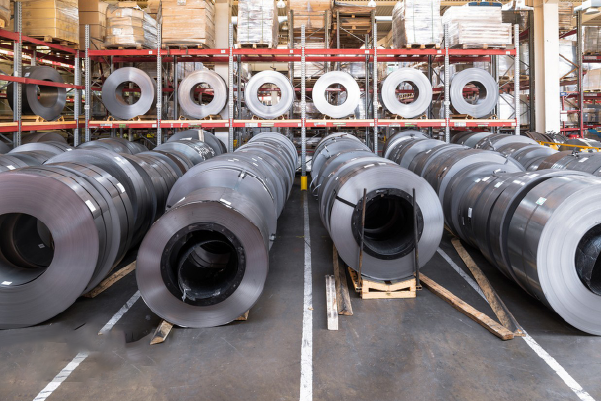
Forecasting stainless steel coil prices is an exercise in navigating probabilities rather than certainties. However, by analyzing key influencing megatrends, we at MFY can develop strategic outlooks that help our clients, from manufacturing companies to engineering contractors and traders, prepare for the years ahead.
Impact of Global Economic Recovery and Industrial Demand
The trajectory of global economic recovery will be a primary determinant of stainless steel coil price trends through 2025. Most economic forecasts, while cautious, point towards a gradual, albeit uneven, global recovery. Emerging markets, particularly in Asia (including MFY's key export markets like India and Southeast Asia), are expected to be key engines of this growth. Continued industrialization, urbanization, and infrastructure development in these regions will sustain robust demand for stainless steel in construction, manufacturing, and consumer durables. For example, India's ambitious infrastructure pipeline and manufacturing incentives are likely to keep demand for stainless steel coils, sheets, and pipes buoyant. As MFY, we are strategically positioned to cater to this growing demand through our strong production capacity and rapid export delivery.
However, the strength and breadth of this recovery are not guaranteed. Potential headwinds include persistent inflation in some economies, geopolitical tensions that could disrupt trade or energy supplies, and the lingering effects of high interest rates on investment. A significant global economic slowdown or recession would inevitably temper industrial activity and put downward pressure on stainless steel demand and prices. Conversely, if major economies like China see a stronger-than-anticipated rebound in their industrial and construction sectors, it could significantly tighten the market. We at MFY monitor leading economic indicators, such as manufacturing PMIs, industrial production indices, and GDP growth forecasts, across key regions to continuously refine our demand outlook and advise our clients accordingly.
The nature of industrial demand is also evolving. The increasing global focus on sustainability and the green transition (EVs, renewable energy infrastructure, energy-efficient buildings) will create new pockets of strong demand for specific types of stainless steel. For instance, duplex stainless steels are favored for their corrosion resistance in desalination plants and offshore structures, while certain austenitic grades are used in EV battery casings and hydrogen infrastructure. MFY’s commitment to innovation-driven development includes expanding our product portfolio to meet these specialized, high-growth application areas. This sectoral shift within industrial demand will likely support prices for certain grades more than others.
Raw Material Market Dynamics: Nickel, Chromium, and Energy
The prices of key raw materials8 – primarily nickel and chromium, along with energy costs – will continue to exert a strong influence on stainless steel coil price forecasts up to 2025. Nickel, in particular, is expected to remain a volatile component. While new nickel production, especially from Indonesia, has helped ease some of the extreme tightness seen previously, demand from both the stainless steel sector (still the largest consumer) and the burgeoning EV battery industry will keep the market sensitive. Any disruptions to supply, whether due to geopolitical issues, resource nationalism, or logistical challenges, could trigger price spikes. At MFY, our integrated raw material trading arm actively manages these risks through diversified sourcing and market analysis.
Chromium, another essential alloying element, has historically been more stable than nickel, but its market is also subject to supply-side factors, particularly from major producers like South Africa. Energy costs, encompassing electricity, natural gas, and coking coal (for some production routes), will establish a crucial baseline for production expenses. While energy prices have moderated from their 2022 peaks, they are unlikely to return to pre-pandemic lows in the short to medium term due to structural changes in global energy markets and the ongoing green transition. Mills will continue to pass these costs through, supporting a higher floor price for stainless steel.
Furthermore, the increasing scrutiny on the environmental footprint of raw material extraction and processing could also influence costs. Investments in more sustainable mining and refining practices, while necessary, may add a premium to raw material prices in the long run. MFY is closely watching these developments, as part of our mission to drive the global expansion of China’s entire stainless steel supply chain involves promoting sustainable practices. The interplay of these raw material and energy cost dynamics suggests that while extreme volatility might lessen, input cost pressures will likely keep stainless steel prices from falling significantly, and any substantial uptick in raw material costs will be quickly reflected in coil prices.
The "Green Steel" Transition and Regulatory Influences
The global push towards decarbonization and "green steel" is a megatrend that will increasingly shape the stainless steel market and its pricing structure by 2025 and beyond. While the full impact may take longer to materialize, the groundwork is being laid now. Stainless steel production is energy-intensive, and traditional methods contribute to carbon emissions. There is growing pressure from governments, investors, and end-users (especially in environmentally conscious markets like Europe) for steel producers to reduce their carbon footprint. This involves investing in new technologies such as hydrogen-based steelmaking, carbon capture, utilization, and storage (CCUS), and increasing the use of renewable energy in production processes. These investments are substantial and will inevitably add to the cost of producing "green" stainless steel.
Regulatory influences, such as Carbon Border Adjustment Mechanisms (CBAMs) like the one being phased in by the EU, will play a critical role. CBAMs aim to level the playing field by imposing a levy on imported goods based on their embedded carbon emissions, preventing "carbon leakage" where production moves to regions with less stringent environmental regulations. This will incentivize producers globally, including in China, to accelerate their decarbonization efforts. MFY, as a company with a vision to be a leading international trade and service brand in China’s stainless steel industry, recognizes the importance of this transition. Our innovation-driven development includes exploring and supporting greener production methods within our supply chain.
By 2025, we may start to see a more distinct two-tiered market emerging: one for conventionally produced stainless steel and another for certified low-carbon or "green" stainless steel, with the latter commanding a premium. This premium will reflect the higher production costs and the value placed on sustainability by certain market segments. For MFY's clients, particularly equipment integrators and manufacturers supplying to projects with stringent environmental criteria, understanding the availability and cost implications of greener stainless steel options will become increasingly important. While it might not be the dominant price driver for all stainless steel coils by 2025, the trend is clear, and its influence will only grow, potentially leading to more complex pricing structures that account for carbon content.
Green steel will command premium pricesTrue
The article states that certified low-carbon stainless steel will likely command a price premium due to higher production costs and sustainability value.
Nickel prices are stableFalse
The text explicitly describes nickel as remaining volatile due to demand from multiple industries and potential supply disruptions.
What recommendations can help businesses adapt to these forecasted price changes?
Feeling unsure how to prepare your business for the forecasted stainless steel coil price changes? Navigating this uncertainty without a plan can expose your projects and profits to significant risk. Proactive strategies are essential for resilience and competitive advantage.
Businesses can adapt by diversifying suppliers, exploring hedging for raw materials, adopting flexible contract terms, investing in inventory management technology, and focusing on value engineering in product design to potentially use less material or alternative grades.
Adapting to forecasted price changes in the stainless steel coil market requires a multi-faceted approach. At MFY, we work closely with our clients – from manufacturing companies to engineering contractors and distributors – to develop strategies that enhance their resilience and competitiveness. One of the primary recommendations I always offer is to build stronger, more collaborative relationships with reliable suppliers9. This goes beyond transactional purchasing; it's about creating partnerships where information is shared, and solutions are co-developed. For instance, engaging in open discussions about potential price volatility can lead to more flexible contract terms, such as agreements that allow for some price adjustments based on transparent raw material indices, or longer-term volume commitments that might secure more stable pricing. Another key area is proactive inventory management. While just-in-case stockpiling can be costly, a well-thought-out inventory strategy, perhaps leveraging a supplier's warehousing capabilities like those MFY offers, can buffer against short-term price spikes or supply disruptions. We also encourage clients to explore value engineering in their product designs. Could a different grade of stainless steel offer comparable performance at a potentially more stable or lower cost? Can design modifications reduce the overall material required without compromising quality? These are questions MFY helps its clients explore, leveraging our technical expertise in stainless steel coils, sheets, and pipes.

Successfully navigating the forecasted stainless steel price landscape up to 2025 demands foresight, agility, and strategic partnerships. At MFY, our commitment is to empower our clients with the tools and insights needed not just to adapt, but to thrive amidst these market dynamics, leveraging our fully integrated supply chain and innovation-driven approach.
Enhancing Supply Chain Resilience and Diversification
In an environment of fluctuating prices and potential disruptions, building a resilient supply chain is paramount. This starts with moving beyond reliance on a single source or region for critical materials like stainless steel coils. At MFY, while we are proud to be a key part of China’s robust stainless steel supply chain, we also advocate for our clients to consider geographical diversification in their overall sourcing strategy where feasible. This doesn't necessarily mean abandoning trusted suppliers, but rather developing alternative or supplementary sources to mitigate risks associated with localized disruptions, be they geopolitical, logistical, or production-related. For a manufacturing client in India producing for export markets, having a diversified supplier base can ensure production continuity even if one supply route faces challenges.
Another crucial aspect of resilience is enhancing transparency and communication throughout the supply chain. This involves fostering open dialogue with suppliers like MFY about demand forecasts, potential bottlenecks, and lead times. Our digital innovation initiatives at MFY aim to provide clients with better visibility into their orders and market trends. Investing in supply chain mapping to understand dependencies and vulnerabilities further up the chain (e.g., raw material origins) can also be beneficial. For instance, understanding the nickel supply chain that feeds into your stainless steel coil production can help anticipate potential price impacts from events in nickel-producing regions.
Finally, consider building strategic partnerships that go beyond simple transactional relationships. This could involve collaborative forecasting with key suppliers, joint inventory management programs, or agreements that offer some level of supply assurance. For example, MFY often works with long-term clients to understand their annual requirements for stainless steel sheets or pipes, allowing us to better plan our production and inventory, thereby providing them with a more stable and reliable supply. Such partnerships are built on trust and mutual benefit, forming the bedrock of a truly resilient supply chain capable of weathering price volatility.
Strategic Procurement and Contract Management
Adapting to forecasted price changes necessitates a shift towards more strategic procurement practices and sophisticated contract management. Simply chasing the lowest spot price can be a risky strategy in a volatile market, potentially leading to quality issues or supply disruptions. Instead, businesses should focus on total cost of ownership (TCO)10, which includes not just the purchase price but also factors like quality, reliability, lead times, and the supplier's ability to provide support and market insights. At MFY, we encourage our clients, whether they are large engineering and construction contractors or equipment integrators, to evaluate suppliers based on a balanced scorecard that reflects these broader value propositions.
In terms of contract management, greater flexibility can be key. While long-term fixed-price contracts offer budget certainty, they can be difficult to secure or may come at a premium in an uncertain market. Consider exploring contracts that incorporate price adjustment clauses linked to transparent, agreed-upon indices for key raw materials like nickel or chromium. This allows for shared risk and reward between buyer and seller. For MFY's distributor and trader clients, who operate on thinner margins and need to react quickly to market shifts, shorter-term contracts or framework agreements that allow for regular price reviews might be more appropriate.
Furthermore, procurement teams should actively engage in market intelligence gathering. Subscribing to industry reports, attending conferences, and maintaining close communication with suppliers like MFY can provide valuable foresight into potential price trends and supply conditions. This information can then be used to make more informed decisions about when to buy, how much to buy, and what type of contractual arrangements to pursue. For instance, if forecasts suggest a potential short-term dip in prices followed by a sustained increase, a company might strategically build a small buffer stock. MFY's sales and market intelligence teams regularly share insights with our clients to support their strategic procurement efforts.
Financial Hedging and Cost Optimization Strategies
For businesses significantly exposed to stainless steel price volatility, exploring financial hedging instruments11 can be a prudent strategy, though it requires expertise and careful consideration. Hedging typically involves using financial derivatives, such as futures or options contracts on commodities like nickel traded on exchanges like the LME, to offset the risk of adverse price movements in the physical stainless steel market. While MFY, as a supplier, doesn't directly offer financial hedging services, we can provide the market information and price transparency that clients might need if they choose to work with financial institutions on such strategies. This is generally more applicable to larger consumers of stainless steel who have the scale and resources to manage these financial instruments.
Beyond financial hedging, there are several operational cost optimization strategies that businesses can implement. One key area is value engineering, which involves systematically reviewing product designs and material specifications to identify opportunities for cost reduction without compromising quality or functionality. This could mean exploring the use of different stainless steel grades that offer the required performance at a lower or more stable cost. For example, a client manufacturing components for a mildly corrosive environment might find that a lower-nickel, higher-chromium ferritic stainless steel coil can replace a more expensive austenitic grade. MFY's technical team often collaborates with clients on such material selection and optimization projects.
Another important aspect is improving internal operational efficiencies to absorb some of the input cost pressures. This can include minimizing material waste in production processes, optimizing energy consumption, and improving labor productivity. For manufacturing companies using our stainless steel coils and sheets, even small improvements in yield or reductions in scrap can have a significant impact on their overall cost structure. Investing in modern processing equipment or lean manufacturing techniques can also contribute to cost optimization. At MFY, our own focus on an integrated supply chain and continuous improvement in our production facilities (cold-rolled processing, tube manufacturing) allows us to manage our costs effectively, which in turn benefits our clients by ensuring competitive and stable pricing wherever possible.
Supplier diversification reduces riskTrue
Having multiple suppliers mitigates risks from localized disruptions and price volatility.
Fixed-price contracts always save moneyFalse
Fixed-price contracts may come at a premium during market uncertainty and lack flexibility.
Conclusion
Navigating stainless steel coil price trends up to 2025 requires vigilance and strategic adaptation. Understanding historical data, external factors, current conditions, and forecasts empowers businesses to make informed decisions. MFY is committed to guiding clients through this dynamic market landscape with expertise.
-
How automotive and construction sector demand impact stainless steel prices ↩
-
Discover how energy intensity impacts manufacturing costs. ↩
-
Understand policies affecting global raw material supplies. ↩
-
To understand market trends affecting procurement decisions in stainless steel coil industry ↩
-
Learn how speculation on the LME affects nickel, a key component in stainless steel ↩
-
Discover export opportunities and trends for stainless steel coils in international markets ↩
-
Learn about stainless steel's role in supporting renewable energy developments ↩
-
Understand the dynamics of nickel and chromium markets affecting stainless steel pricing ↩
-
Explore key traits that ensure supply reliability and partnership benefits ↩
-
Understanding holistic cost metrics beyond just purchase price in procurement decisions ↩
-
Uncover how hedging instruments mitigate financial risks in fluctuating markets ↩
Have Questions or Need More Information?
Get in touch with us for personalized assistance and expert advice.
